The Aeromarine 39 was an American two-seat training seaplane ordered by the US Navy in 1917. It was built by the Aeromarine Plane and Motor Co., Keyport, New Jersey. This conventional biplane was designed so that pontoons could be detached and replaced with wheeled undercarriage quicky. In all, 150 were delivered, a small spec in the overall 1917-19 US aircraft production. Yet still, it was ther first model baptising the USS Langley (CV-1), very first US Navy aircraft carrier. Its pilots wrote the book on carrier operations for future generations to follow.
The first USN Trainer
About Aeromarine
The Aeromarine Plane and Motor Company was an early American aircraft manufacturer that operated from 1914 to 1930. Founded by Inglis M. Uppercu, a New York businessman and aviation enthusiast, the company was based in Keyport, New Jersey. Aeromarine specialized in producing military seaplanes and flying boats, notably the Aeromarine 39 and Aeromarine 40 models, which were used primarily for training purposes by the U.S. Navy during World War I. The company also contributed to early commercial aviation by establishing Aeromarine Airways, one of the first companies to offer regular passenger flights. In 1928, Aeromarine merged with the German Klemm aircraft company, forming the Aeromarine-Klemm Corporation, focusing on producing light aircraft. However, the economic challenges of the Great Depression led to the company’s closure in 1930.
Development
In 1911 Eugen Ely made the first successful landing and take offs from a USN cruiser, setting up the roots for future air assets in the Navy. This was done with a frail Curtiss biplane. However technology progresses by giant leaps, and in 1914, as war flared up in Europe, the USN wanted to develop further its air branch. In April 1917, the US declared war on Germany and the Navy expressed the need for a trainer. The Aeromarine Plane and Motor Company was founded in Keyport, New Jersey, prior to the outbreak of World War I and answered the call. The model they showcased impressed the Navy staff. In mid-1917, the Navy placed an order with the Aeromarine Plane and Motor Company of Keyport, at the time, the largest single order for Navy aircraft: 50. All were of what was known later as the Model 39-A and later, after the company went for modifications, ordered 150 39-B trainers (see variants).
General Layout
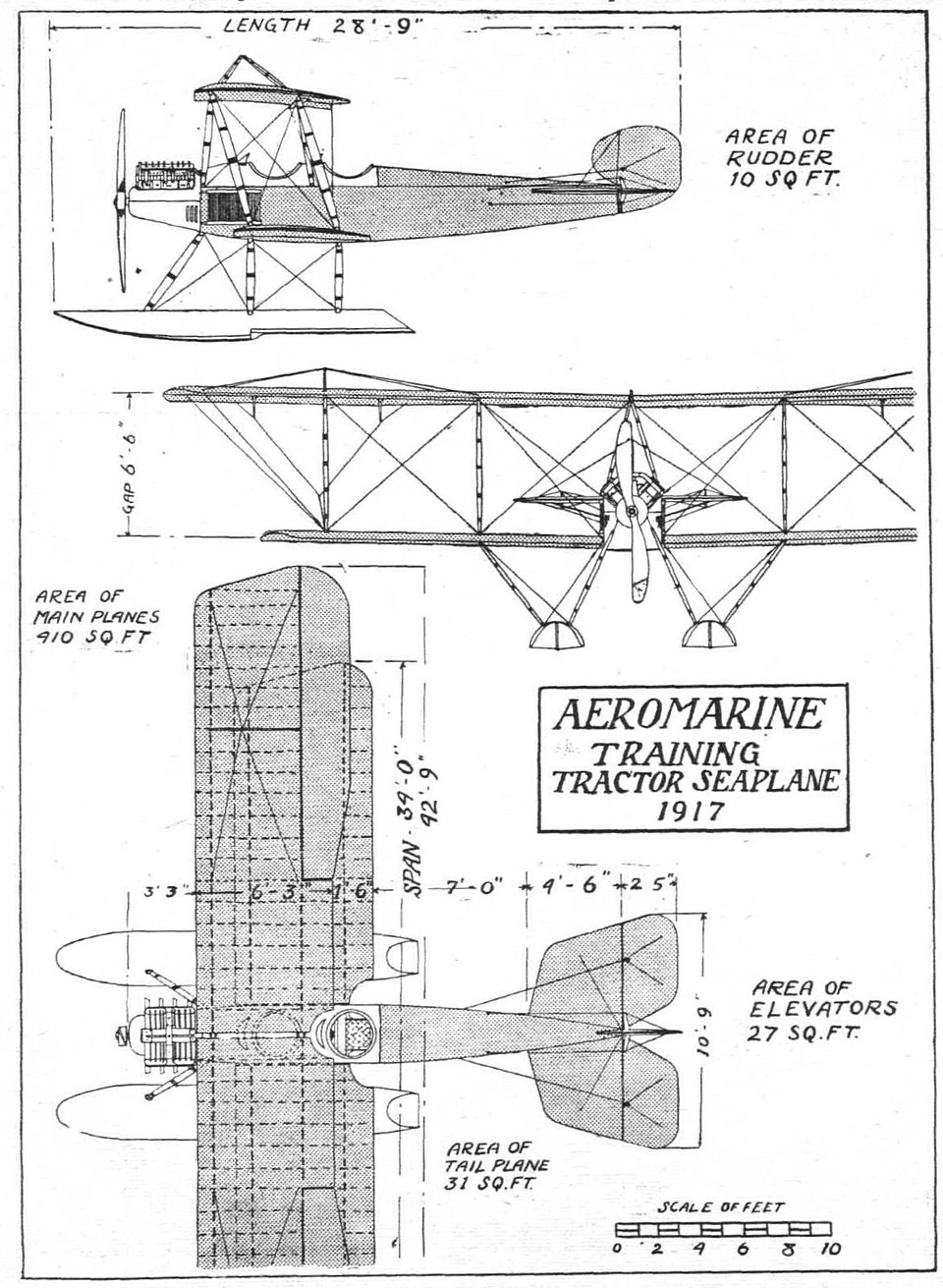
39A with floats versions
Both types of biplanes were two-seat trainers, both built with either wheeled landing gear or floats. The ability to install the latter became a distinctive feature of both models. The 39-A was equipped with twin wooden floats. It was powered by a Hall-Scott A-7A four-cylinder in-line piston engine producing 100 horsepower. This engine was about 300 pounds heavier than the equally powerful Curtiss OXX-6 V8 engine that powered the Model 39-B. The floats on this aircraft were arranged differently: one long one in the centre, two small ones under the lower wing consoles. This configuration became standard for all future seaplanes of the US Navy. The Aeromarine 39-B was an excellent training aircraft, but conventional single bay equal span biplane built in metal frame and wood wrapped in canvas. It featured at first a double float configuration that became standard on all US Navy floatplanes. The strong point of the design is that this twin floats could be swapped for a conventional wheeled undercarriage or skis in a matter of 30 seconds.
Engine and Performances

Structure
The 39A was powered by a 100-horsepower Hall-Scott A-7A four-cylinder in-line piston engine. This engine was about 300 pounds heavier than the equally powerful Curtiss OXX-6 V8 that powered the Model 39-B. It drive a fixed pitch wooden 2-bladed propeller, up to 73 mph (117 km/h, 63 kn) in top speed, with however a weak power/Mass of just 0.049 hp/lb (80 W/kg) and a range of 273 mi (439 km, 237 nmi). Service ceiling was 8,200 ft (2,500 m). 100 hp to lift off up to 2,505 lb (1,136 kg) made this model hardly an interceptor, but it was easy to pilot and thanks to its large doubled wingspan of 47 ft (14.32 m), it could approach slowly without risks of loosing lift, ideal to land on a carrier. The same great lift enabled t take off in a short distance. The limited deck length of Langley was not an issue.
Variants
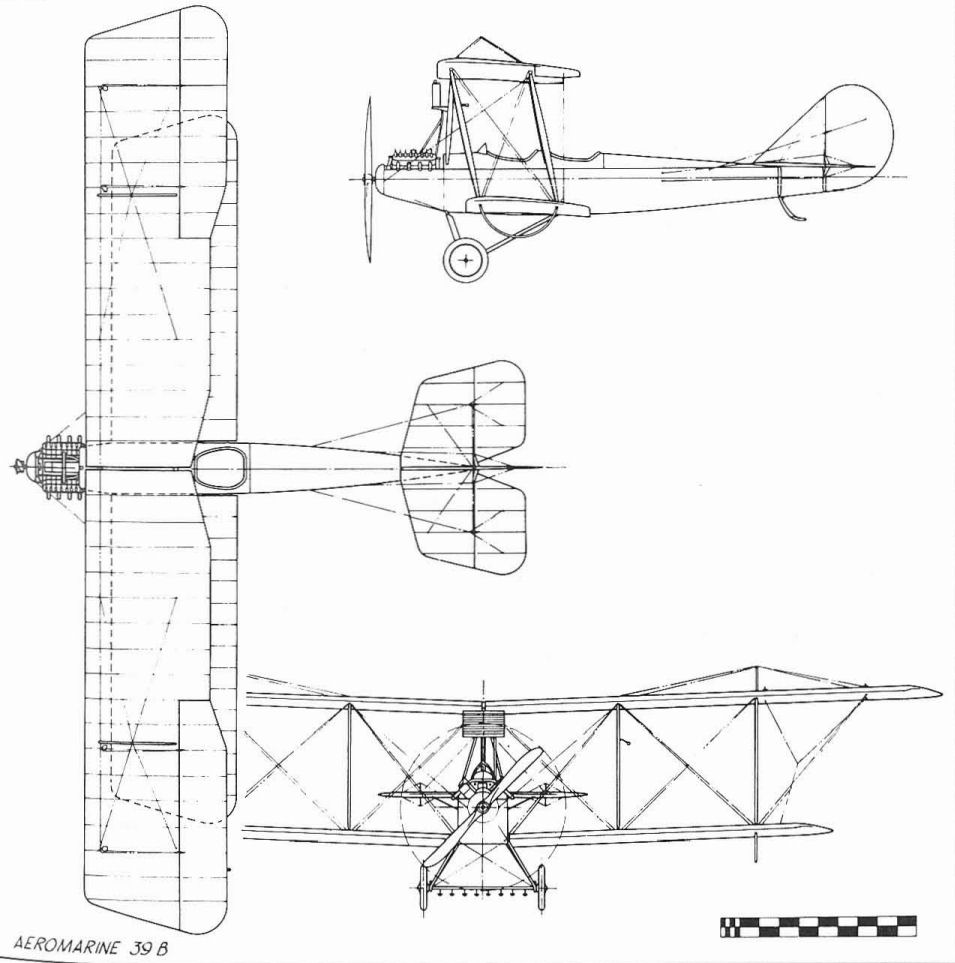
Aeromarine 39B
On October 26, 1922 Godfrey DeCourcelles Chevalier landed a 39B on a moving ship, USS Langley, the first time this had been achieved on an American aircraft carrier. Trials of underway carrier takeoffs and landings continued through 1922 and 1923.
39A
50 of the original design, later referred to as the 39A were produced with twin floats and powered by a Hall-Scott A-7 engine.
39B
After a redesign followed, the wingspan was increased for extra lift for water take-offs 39B. A single pontoon with outrigger floats was fitted instead of two, there was an enlarged vertical tail fitted and the more powerful Curtiss OXX engine.
Detailed specs
Specs Aeromarine 39 |
|
| Crew: | 2 (twin commands, twin fuselage version) |
| Fuselage Lenght | 30 ft 4.25 in (9.25 m) |
| Wingspan | 47 ft (14.32 m) |
| Height | 13 ft 2 in (4.01 m) |
| Wing Area: | 494 sq ft (45.89 m2) |
| Empty weight: | 1,939 lb (880 kg) |
| Gross weight: | 2,050 lb (931 kg) |
| Max TO weight: | 2,505 lb (1,136 kg) |
| Powerplant: | Curtiss OXX-6 Vee piston, 100 hp (75 kW) |
| Propeller: | Fixed pitch wooden 2-bladed |
| Top speed: | 73 mph (117 km/h, 63 kn) |
| Power/Mass: | 0.049 hp/lb (80 W/kg) |
| Range: | 273 mi (439 km, 237 nmi) |
| Service ceiling: | 8,200 ft (2,500 m) |
| Armament | None (Trainer) |
Combat Service
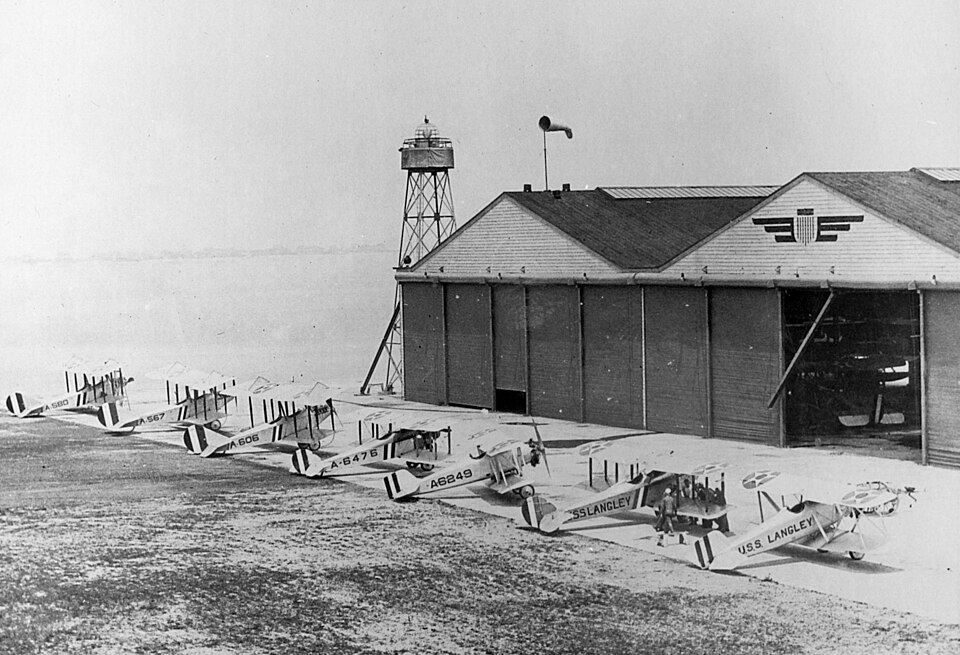
TS-1 and Aeromarine 39B in VE-9 at NAS Norfolk in 1924
Being the trainer, the 39A only served to train the first batch of USN pilots back in the US, notably on the Atlantic cost at NAS Norfolk. The 39B however was deployed in France in 1918 and did take part in coastal operations, used for training and reconnaissance in European combat conditions. All ordered aircraft were built and transferred to the US Navy and some of them remained in service after the end of the war. Two were from 1921 were used to train pilots to take off from the deck of an aircraft carrier, landing on shore afterwards. After long training on a mock-up, Lieutenant Jeffrey De Chevalier landed the Model 39-B on the deck of USS Langley, a world’s first in the history of world aviation, on October 26, 1922.
Lieutenant Commander Godfrey Chevalier was the 7th pilot qualified in the USN. He commanded the first naval air station (NAS) in France in World War I and by 1922, was the first to land on USS Langley, named to honour the original aviation pioneer, with an Aeromarine 39B, A-606. The exploit of October 26, 1922, showcased a modified model which a hook pivoting aft from the fuselage midsection. This hook acted as a brake for the aircraft during landing, but its small hooks attached to the chassis of the aircraft that caught the wires. These hooks clung to rows of wire stretched along the deck. The movement of the seaplane was levelled by tuning up the Curtiss OXX-6 engine. USS Langley was converted as an aircraft carrier from the original collier USS Jupiter. Given the few numbers built, but based on the importance of this model for the USN, an example of a 39B is preserved at the Old Rhinebeck Aerodrome, in restoration after being severely damaged by two fires in 1966 and 1982.
Gallery
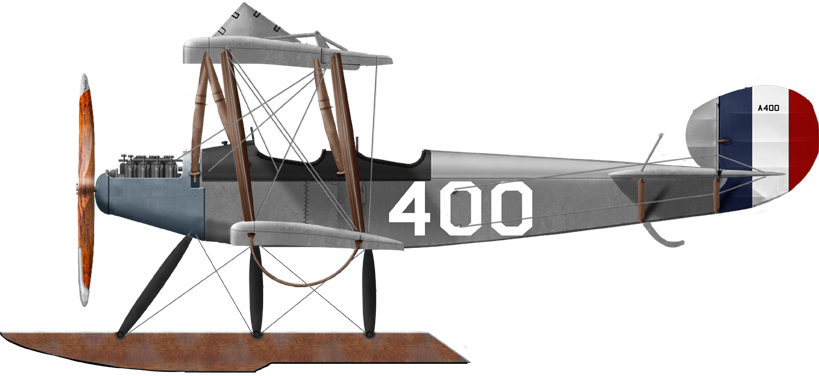
39A with its initial twin wooden float configuration
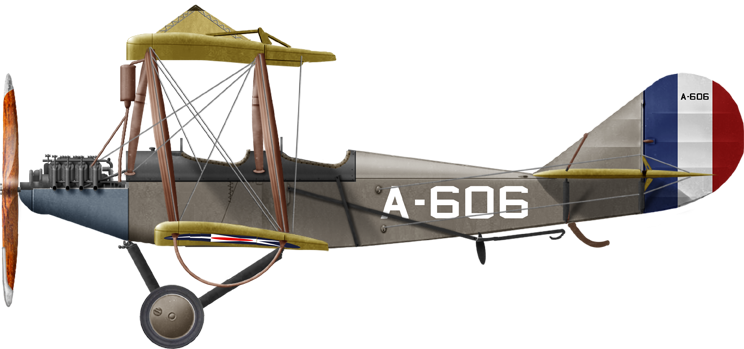
39B in land configuration, G.Chevalier, USS Langley 1922

Aeromarine 39 with Pratt hook
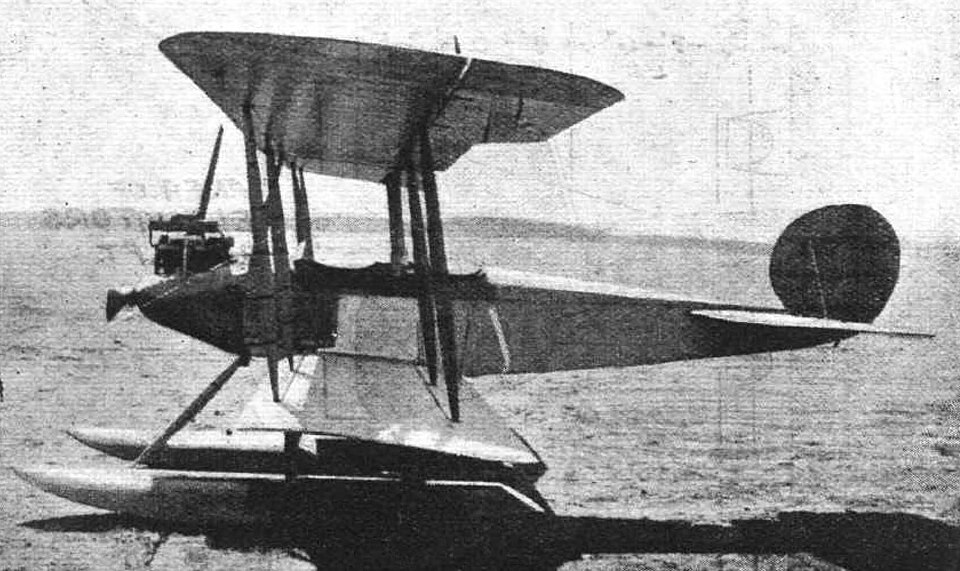
39A on floats, Flight Magazine 1917
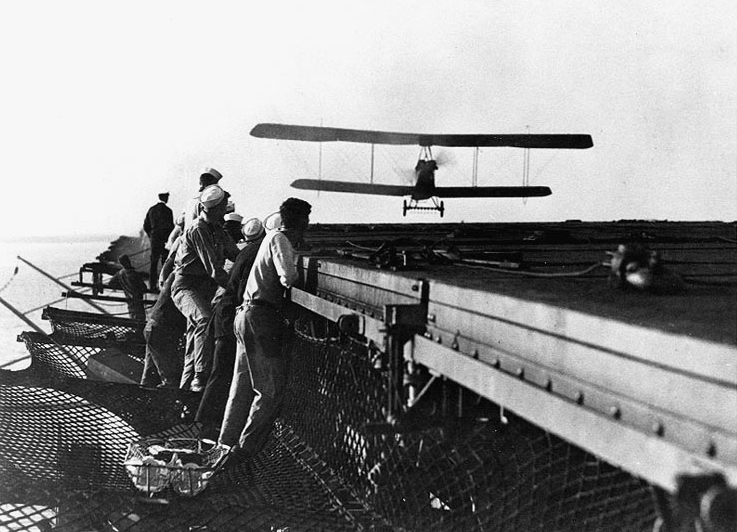
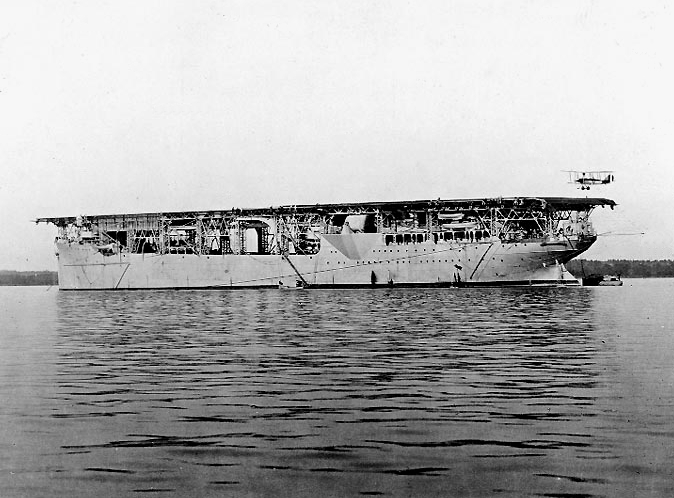
39B landing aboard USS Langley CV-1 in October 1922
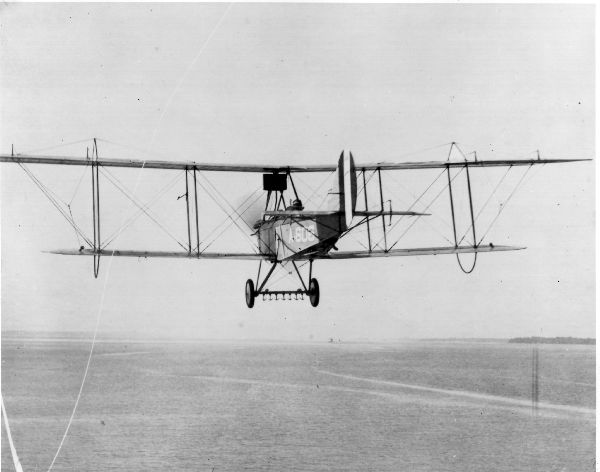
Aeromarine 39B Taking Off from Langley
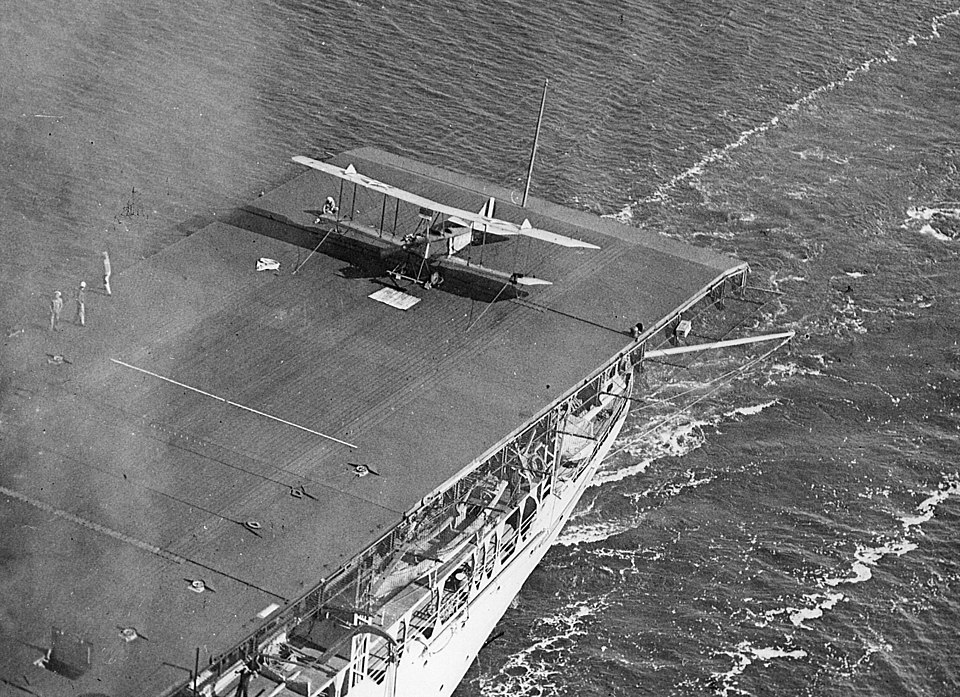
Aeromarine 39B after landing on CV-1 Langley in 1923
Read More and Sources
books
The Illustrated Encyclopedia of Aircraft (Part Work 1982-1985). Orbis Publishing.
links
simanaitissays.com
airwar.ru
aviadejavu.ru
flyingmachines.ru
en.wikipedia.org
Model Kits
Aeromarine 39B Float Version Ardpol 1:72
Video

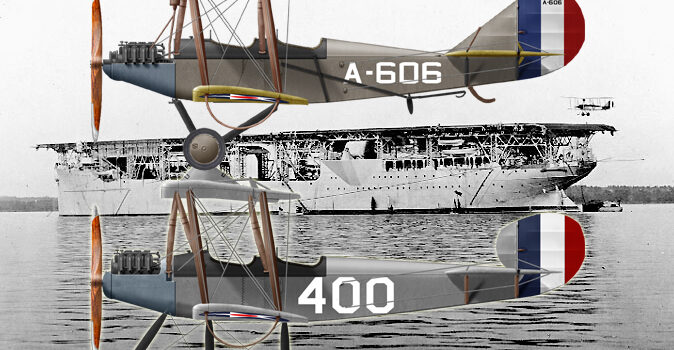
 Latest Facebook Entry -
Latest Facebook Entry -  X(Tweeter) Naval Encyclopedia's deck archive
X(Tweeter) Naval Encyclopedia's deck archive Instagram (@navalencyc)
Instagram (@navalencyc)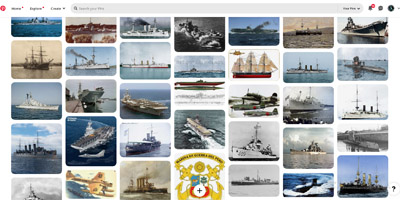

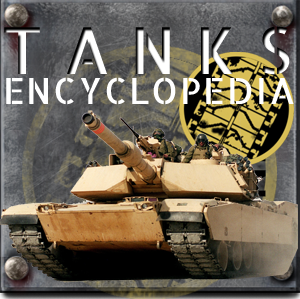
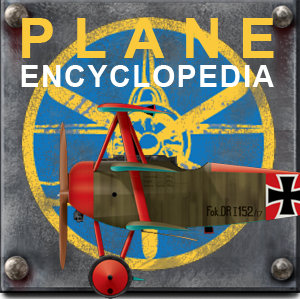
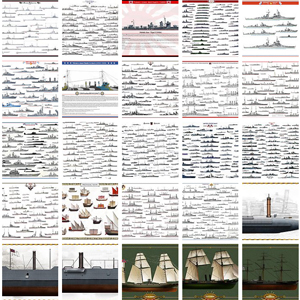

 French Navy
French Navy Royal Navy
Royal Navy Russian Navy
Russian Navy Armada Espanola
Armada Espanola Austrian Navy
Austrian Navy K.u.K. Kriegsmarine
K.u.K. Kriegsmarine Dansk Marine
Dansk Marine Nautiko Hellenon
Nautiko Hellenon Koninklije Marine 1870
Koninklije Marine 1870 Marinha do Brasil
Marinha do Brasil Osmanlı Donanması
Osmanlı Donanması Marina Do Peru
Marina Do Peru Marinha do Portugal
Marinha do Portugal Regia Marina 1870
Regia Marina 1870 Nihhon Kaigun 1870
Nihhon Kaigun 1870 Preußische Marine 1870
Preußische Marine 1870 Russkiy Flot 1870
Russkiy Flot 1870 Svenska marinen
Svenska marinen Søværnet
Søværnet Union Navy
Union Navy Confederate Navy
Confederate Navy Armada de Argentina
Armada de Argentina Imperial Chinese Navy
Imperial Chinese Navy Marinha do Portugal
Marinha do Portugal Mexico
Mexico Kaiserliche Marine
Kaiserliche Marine 1898 US Navy
1898 US Navy Sovietskiy Flot
Sovietskiy Flot Royal Canadian Navy
Royal Canadian Navy Royal Australian Navy
Royal Australian Navy RNZN Fleet
RNZN Fleet Chinese Navy 1937
Chinese Navy 1937 Kriegsmarine
Kriegsmarine Chilean Navy
Chilean Navy Danish Navy
Danish Navy Finnish Navy
Finnish Navy Hellenic Navy
Hellenic Navy Polish Navy
Polish Navy Romanian Navy
Romanian Navy Turkish Navy
Turkish Navy Royal Yugoslav Navy
Royal Yugoslav Navy Royal Thai Navy
Royal Thai Navy Minor Navies
Minor Navies Albania
Albania Austria
Austria Belgium
Belgium Columbia
Columbia Costa Rica
Costa Rica Cuba
Cuba Czechoslovakia
Czechoslovakia Dominican Republic
Dominican Republic Haiti
Haiti Hungary
Hungary Honduras
Honduras Estonia
Estonia Iceland
Iceland Eire
Eire Equador
Equador Iran
Iran Iraq
Iraq Latvia
Latvia Liberia
Liberia Lithuania
Lithuania Mandchukuo
Mandchukuo Morocco
Morocco Nicaragua
Nicaragua Persia
Persia San Salvador
San Salvador Sarawak
Sarawak Uruguay
Uruguay Venezuela
Venezuela Zanzibar
Zanzibar Warsaw Pact Navies
Warsaw Pact Navies Bulgaria
Bulgaria Hungary
Hungary

 Bundesmarine
Bundesmarine Dutch Navy
Dutch Navy Hellenic Navy
Hellenic Navy Marina Militare
Marina Militare Yugoslav Navy
Yugoslav Navy Chinese Navy
Chinese Navy Indian Navy
Indian Navy Indonesian Navy
Indonesian Navy JMSDF
JMSDF North Korean Navy
North Korean Navy Pakistani Navy
Pakistani Navy Philippines Navy
Philippines Navy ROKN
ROKN Rep. of Singapore Navy
Rep. of Singapore Navy Taiwanese Navy
Taiwanese Navy IDF Navy
IDF Navy Saudi Navy
Saudi Navy Royal New Zealand Navy
Royal New Zealand Navy Egyptian Navy
Egyptian Navy South African Navy
South African Navy






























 Ukrainian Navy
Ukrainian Navy dbodesign
dbodesign